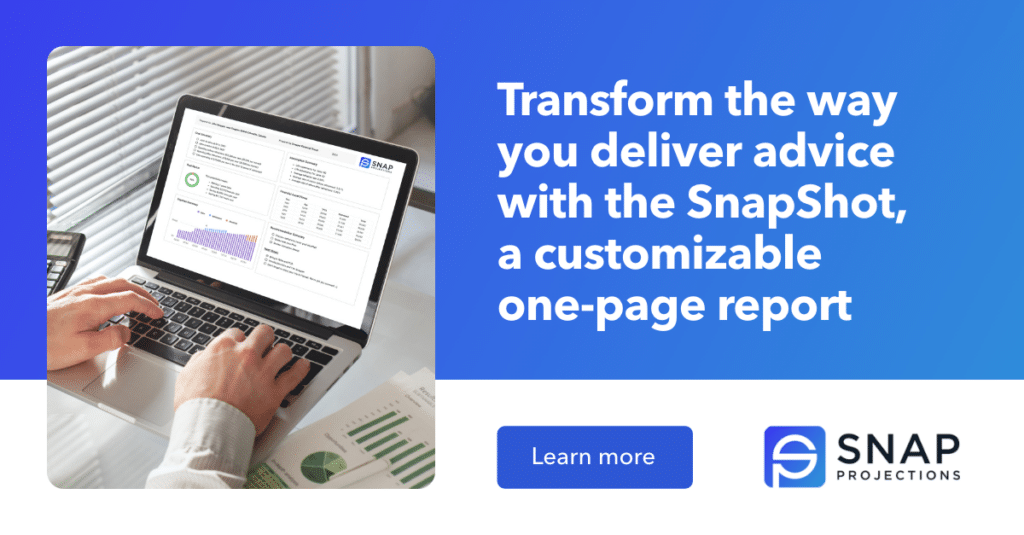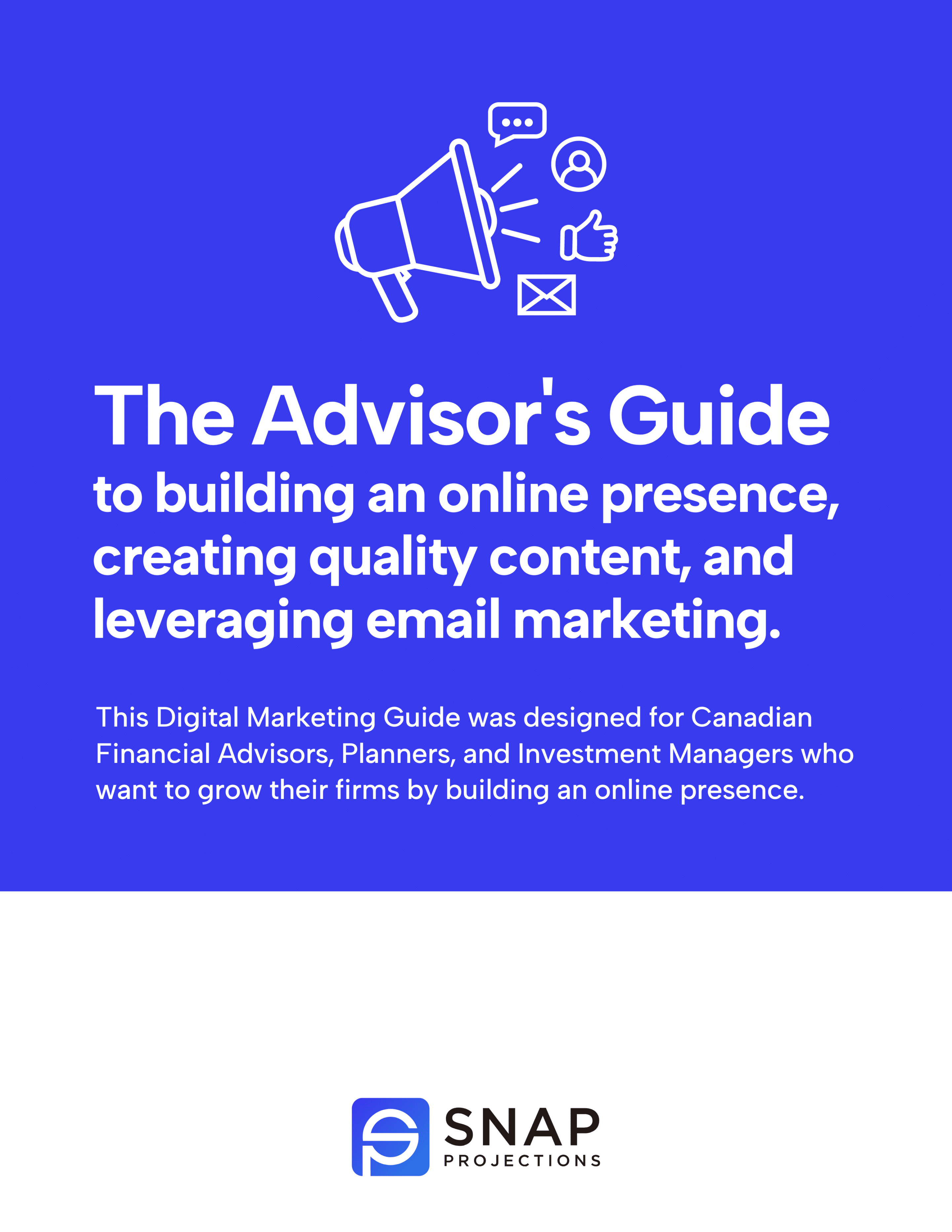Creating content as a Financial Advisor or Financial Planner can be a highly effective way to engage with your audience, demonstrate your expertise, and attract potential clients.
Let’s start with exploring the specific benefits to your practice, and then we can get into the “how” of it all.
Why should today’s Financial Advisors & Planners create content for their audience?
Demonstrate Expertise: Creating content allows you to showcase your knowledge and expertise in financial matters. It establishes you as a credible authority in your field, building trust with potential clients.
Educate Your Audience: Content can be used to educate clients and prospects about various financial topics, helping them make informed decisions about their financial future. Educated clients are more likely to trust your advice.
Attract and Engage: Quality content can attract your target audience and engage them effectively. By addressing their specific concerns and providing valuable information, you can capture their attention and keep them coming back for more.
Build Trust: Content creation can help build trust with your audience. Regular, informative content demonstrates your commitment to helping your clients succeed, which can instill confidence in your services.
Differentiation: In a competitive market, creating content that highlights your unique approach, values, and expertise sets you apart from other advisors or planners. It helps potential clients see what makes you special.
Expand Your Reach: Content, especially when shared on digital platforms, can reach a broader audience than traditional marketing methods. You can connect with clients and prospects across various demographics and geographical locations.
Improve SEO: Creating and regularly updating content on your website, such as blog posts, can improve your search engine ranking. This can help potential clients find you more easily when they search for financial services online.
Lead Generation: Content can be an effective lead generation tool. High-quality content that addresses common financial questions or issues can attract individuals who are actively seeking financial guidance.
Reputation Management: Content creation allows you to manage your online reputation. You can address negative reviews or misinformation by providing accurate and helpful information through your content.
Adapt to Changing Trends: Financial markets, regulations, and client needs change over time. Creating content allows you to stay up to date and adapt to these changes, ensuring your clients receive relevant advice.
Cost-Effective Marketing: Compared to traditional advertising methods, content creation is a cost-effective way to market your services. Once published, content can continue to attract and engage clients over time without ongoing advertising expenses.
Referral Generation: High-quality content can be a powerful tool for generating referrals. When your clients find your content valuable, they are more likely to refer their friends and family to you.
Thought Leadership: Consistent content creation can establish you as a thought leader in your industry. This can lead to speaking engagements, collaborations, and other opportunities to expand your influence.
Client Retention: Content can be a valuable tool for keeping your existing clients informed and engaged. When clients see you as a valuable resource, they are more likely to stay with you for the long term.
Personal Branding: Content creation allows you to build a personal brand. Your unique voice, values, and expertise can become synonymous with your financial services, making you more memorable to clients and prospects.
Creating content is a powerful strategy for Financial Advisors and Planners to build trust, educate their audience, differentiate themselves, and grow their business in an increasingly competitive and digital world. Today’s consumers want it, so you’re at risk of being left behind without it.
The good news is that you don’t need to learn how to blog (not today, at least!) or really do anything high-tech when you’re just trying to get your feet wet. You’re going to keep it simple and start small with what you already have — and that’s a list of existing clients who have given you permission to communicate with them via email.

Download your free digital marketing guide for Canadian Financial Advisors, Planners, and Investment Managers here.
Here is how other Advisors have started creating content, and it’s going to be simpler than you think. This is the 5-step process.
- Start with your existing clients and email marketing. Assuming you have their permission to email them, you can use a free email marketing tool like MailChimp or our fav, ConvertKit. It’s totally fine if your list only has 10 names. You’ve got to start somewhere!
- Pick a cadence that feels manageable — bi-weekly is a great place to start and you can build from there. Block time in your calendar, a few hours at least, to protect that time and ensure you can meet the creation goal you have set for yourself.
- Now comes the perceived hard part, which is — what am I going to create and send out? Good news again, because this can actually be quite simple. What you’re going to do is sit down and look through all your client meeting notes. What did you discuss? What questions did you receive? The goal is to create content that your clients want and you should be able to determine what they want to know more about from your meetings. Start making a list of the things your client talk about and the questions they ask you. If 3/6 clients last week were asking about tax planning, there’s your topic. Start looking for patterns.
- Craft an email on your topic of choice and include video when possible. It’s a lot quicker to talk into your webcam if writing does not come easily to you. You could also upload the video to YouTube and use their transcribing feature. It does not need to be perfect. You just need to start with something valuable and you can work on improving your delivery as you go. Always create your email outside of the service you are using to ensure you have the content in your posession. Just copy and paste into the email program once you’re ready.
- Send it out consistently! Grow your list weekly by inviting all new clients and all prospects you meet with to join your mailing list. Make sure you articulate that your newsletter is driven by addressing your most common client questions and concerns. If you have a website, you can add a form that connects to your email service and asks people to opt-in, just like this.
Those are the absolute most basic steps to getting started. Once you achieve that, once you have a consistent process for creating and distributing quality content, all the steps to scaling will be easier.
Many people make a lot of mistakes when it comes to creating content. They do it for the wrong reasons. They expect an immediate and obvious return on investment. They think that quantity is more important than quality. Content takes time, but as long as you start with the primary objective of providing value to your clients, you can’t go wrong.
Once you’ve gotten through the initial stages of consistently creating and publishing to your existing client base, you may be ready to take it to the next level.
Your first step outside the email list (again, just keeping it simple) can be LinkedIn. Connect with your clients and prospects and you can post your newsletters there, too. You can create LinkedIn articles out of your newsletters in just a few clicks. Like you did with getting your newsletter started, you’re going to block time each week into your calendar to ensure you achieve this next step before reaching for more.
Once you’ve nailed the beginning stages and have a consistent process with emails and LinkedIn, you may be ready for more. Here are some tips and ideas that can help optimize your process and expand your reach.
Define your target audience:
-
- Identify your ideal clients. Who are they? What are their financial goals and challenges? Knowing your audience will help you create content that resonates with them.
Set clear objectives:
-
- Determine what you want to achieve with your content. Do you want to educate, build trust, generate leads, or establish yourself as an authority in a specific niche? Your objectives will guide your content strategy.
Choose content formats:
-
- Decide which content formats align with your strengths and resources. Common formats include blog posts, videos, podcasts, infographics, webinars, and social media updates. Start with one new format and expand as you become more comfortable.
Brainstorm content ideas:
-
- Generate a list of potential topics and ideas that your target audience is interested in. Think about common questions or problems they face. Addressing their needs will make your content more relevant. If you want to increase how often you publish, this step is crucial to ensure you have a high-quality topic available at all times.
Create a content calendar:
-
- Plan your content in advance. A content calendar helps you stay organized and consistent. It can include publishing dates, content titles, and the channels where you’ll share your content. Excel and Google Sheets both work great for this purpose.
Research and stay informed:
-
- Stay up to date with industry trends, financial news, and relevant regulations. Being informed allows you to create timely and relevant content.
Produce high-quality content:
-
- When you start creating content, focus on quality over quantity. Your content should be accurate, well-researched, and well-written. If you’re creating videos or podcasts, invest in good equipment for better production quality.
Optimize for SEO:
-
- If you’re writing blog posts, learn the basics of search engine optimization (SEO) to improve the visibility of your content in search engines. This can attract organic traffic to your website.
Promote your content:
-
- Share your content on other social media platforms and in relevant forums or communities. Encourage your audience to share your content as well.
- You can also network and collaborate by connecting with other professionals in your industry, such as lawyers, accountants, or real estate agents, and consider collaborating on content. This can expand your reach and provide diverse perspectives.
- Remember that your email content can be re-purposed for numerous things, such as taking a paragraph or two and making a Facebook post.
Engage with your audience:
-
- Respond to comments, questions, and feedback from your audience. Engaging with your audience builds relationships and shows your expertise. You can also use this to generate content ideas, simply by asking your audience what topics they want to know more about. LinkedIn is a great place to ask questions, and you can also send out email surveys.
Measure and analyze:
-
- Use analytics tools to track the performance of your content. Understand what’s working and what’s not. This data can guide your future content strategy. When just starting out with email marketing, you can track the basic metrics like Open Rates, Click Rates, and Unsubscribes. Look to see how different topics and types of content are received and make more of what people engage the most with.
- Continuously iterate and improve by refining your content strategy based on your audience’s preferences and your performance data. Be willing to adapt and evolve your approach.
Comply with regulations:
-
- If you’re in a highly regulated industry, ensure that your content complies with all relevant financial regulations and disclosure requirements.
Remember, building an audience and seeing the results of your content efforts will take time. Be patient and persistent, and over time, you’ll establish yourself as a valuable resource first to your clients and eventually to the industry.
The key take-away here is to start small with what you have. Keep it consistent before adding in additional steps. You have a Financial Planning Process for your practice, your content is no different!


